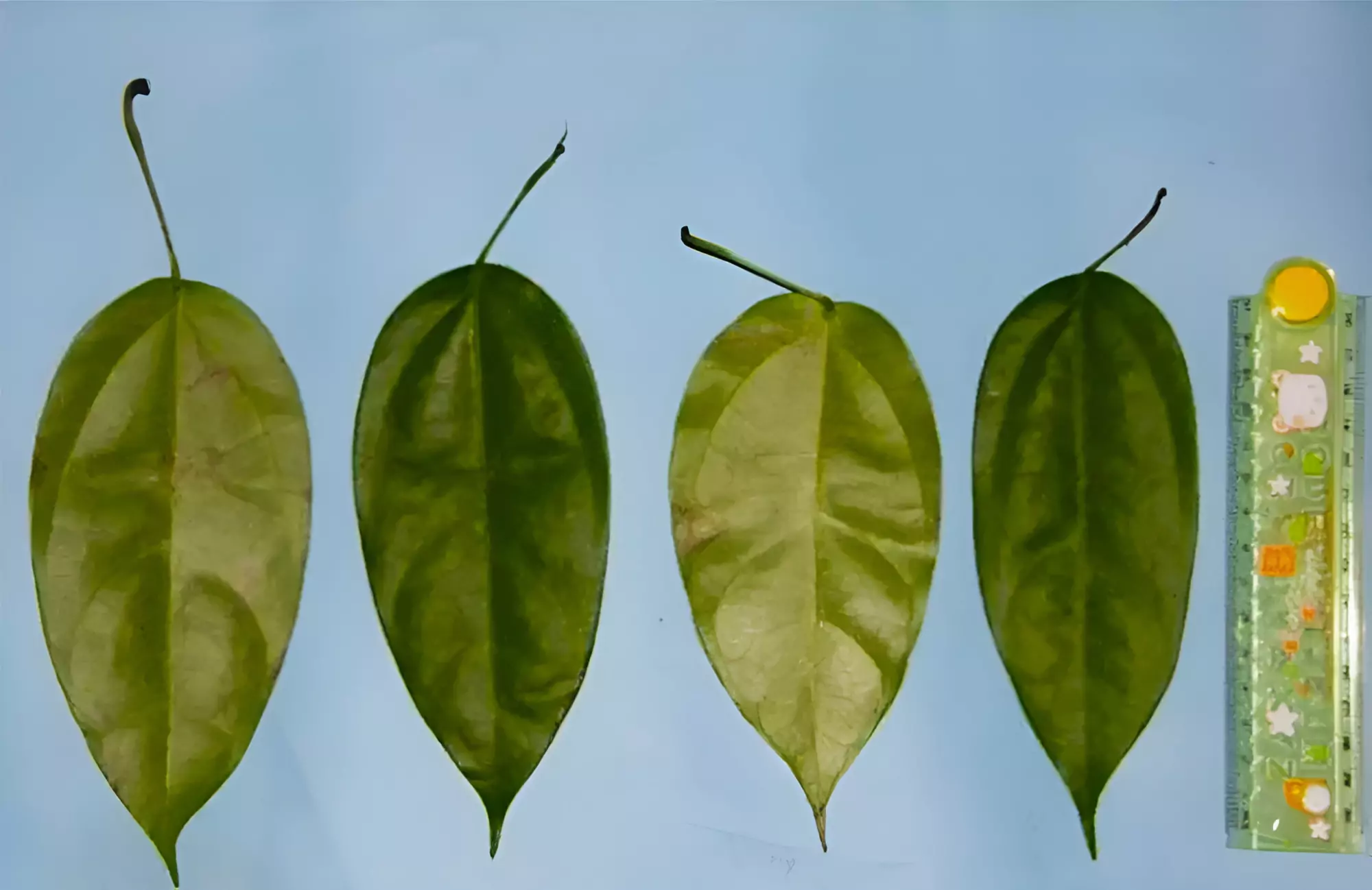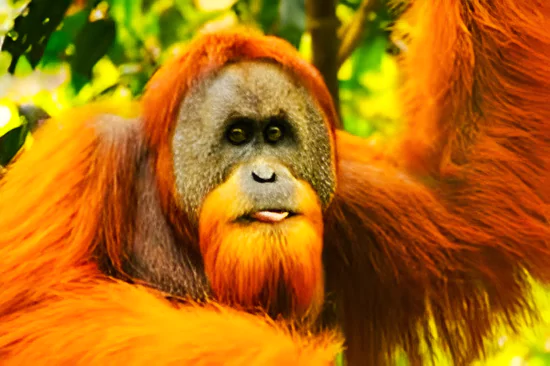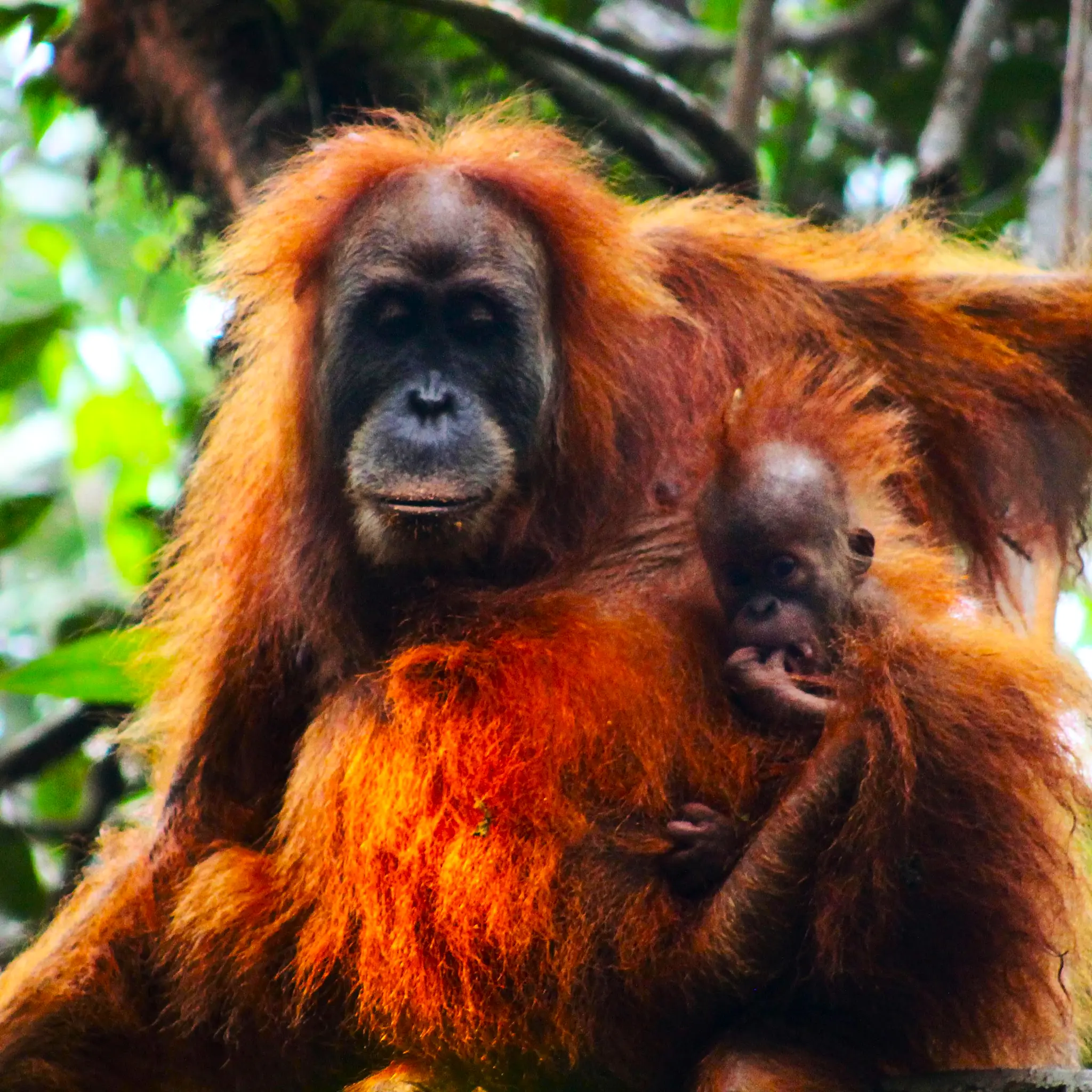Context
A male orangutan, on the Indonesian island of Sumatra, has been recorded by German and Indonesian scientists using a medicinal plant Akar Kuning (Fibraurea tinctoria), or yellow root to treat a wound on his face.
Orangutan Self-Medicates Wound Using Medicinal Leaves, In First For Wild Animals
A male Sumatran orangutan named Rakus sustained a face injury.
-
- Three days following the injury, Rakus selectively plucked leaves of Akar Kuning (Fibraurea tinctoria), chewed them, and applied the resulting juice onto the facial wound for several minutes.
- Finally, he fully covered the wound with the chewed leaves.
- Significance: The observation suggests that the cognitive capacities that are needed for the active wound treatment with plants may be as old as the last common ancestor of orangutans and humans.
Enroll now for UPSC Online Course
Self-medication in Non-humans
- Natural Remedies Among Great Apes: The great apes are known to ingest specific plants to treat parasite infection and to rub plant material on their skin to treat sore muscles.
- Ex- a chimpanzee group in Gabon was observed applying insects to wounds.
- However, the treatment of a wound with a biologically active substance has so far not been documented.
Akar Kuning (Fibraurea tinctoria)

- Habitat: It is indigenous to the tropical forests of Southeast Asia.
- This plant, widely distributed across China, Indonesia, Malaysia, Thailand, Vietnam and other parts of Southeast Asia.
- Medicinal Properties: This plant along with others in its family is recognized for its analgesic and antipyretic properties.
- Local communities indeed employ these plants in traditional medicine to address various ailments, including malaria.
- Wound Healing Properties: It has furanoditerpenoids and protoberberine alkaloids, which possess antibacterial, anti-inflammatory, antifungal, antioxidant, and other biological properties pertinent to wound healing.
Orangutans (‘Man of the forest’)
They are one of the extant species of great apes. The others are the Common Chimpanzee, Gorilla and the Chimpanzee or Bonobo.
-
- Orangutans are the least closely related to humans but still share approximately 97% of our DNA.
- Arboreal Mammals: Orangutan means “person of the forest” in the Indonesian and Malay languages, and these apes are the world’s biggest arboreal mammal.
- Social structure: Orangutans, adapted to living in trees, live more solitary lives than other great apes, sleeping and eating fruit in the forest canopy and swinging from branch to branch.
- They make nests in trees of vegetation to sleep at night and rest during the day.
- Cognitive Abilities: Orangutans have high cognitive abilities and are known to be excellent problem-solvers.
- Wild orangutans acquire their skill sets via observational social learning, and skills get passed on from generation to generation.
- Types of Male Orangutan: There are two different types of adult male orangutan- flanged and unflanged.
- Flanged Males: They have prominent cheek pads called flanges and a throat sac used to make loud verbalizations called ‘long calls’. They also have a long coat of dark hair on their back.
- Unflanged Males: They look like an adult female. Both reproduce and an unflanged male can change to a flanged male for reasons that are not yet fully understood.
- Orang-utans are the only primate in which this biological phenomenon occurs.
- Life cycle: Orang-utans can live up to 50 years in the wild. Females first reproduce between 10-15 years of age.
- They give birth at most once every 5 years, and the interval between babies can be as long as 10 years.
- Reproduction and Development: Gestation is seven-and-a-half to eight-and-a-half months.
- The orangutan has the longest period of dependence on the mother of any other land-dwelling animal, including humans.
- Distribution: The orangutans are found on the islands of Sumatra in Indonesia and Borneo, which is divided between Malaysia, Indonesia and Brunei.

- Types of Orangutans: There are three types of orangutans taxonomically — the Sumatran, the Bornean and the Tapanuli.
- Sumatran Orangutans: Sumatran orangutans have longer facial hair. The Bornean and Sumatran species have shaggy reddish fur.
- They are reported to have closer social bonds than their Bornean cousins.
- The Sumatran orangutan is almost exclusively arboreal.
 Females virtually never travel on the ground and adult males do so only rarely. This is in contrast to Bornean orang-utans, especially adult males, which more often descend to the ground.
Females virtually never travel on the ground and adult males do so only rarely. This is in contrast to Bornean orang-utans, especially adult males, which more often descend to the ground.
- Bornean orangutan: It differs in appearance from the Sumatran orangutan, with a broader face and shorter beard and also slightly darker in color.
- Tapanuli Orangutan: The third species of orangutan was announced in November, 2017.
- With no more than 800 individuals in existence, it is the most endangered of all great apes.
- Habitat: It lives in North Sumatra, but is genetically and behaviorally distinct from the two other species.
- IUCN Status: Critically Endangered:
Enroll now for UPSC Online Classes


 Females virtually never travel on the ground and adult males do so only rarely. This is in contrast to Bornean orang-utans, especially adult males, which more often descend to the ground.
Females virtually never travel on the ground and adult males do so only rarely. This is in contrast to Bornean orang-utans, especially adult males, which more often descend to the ground.